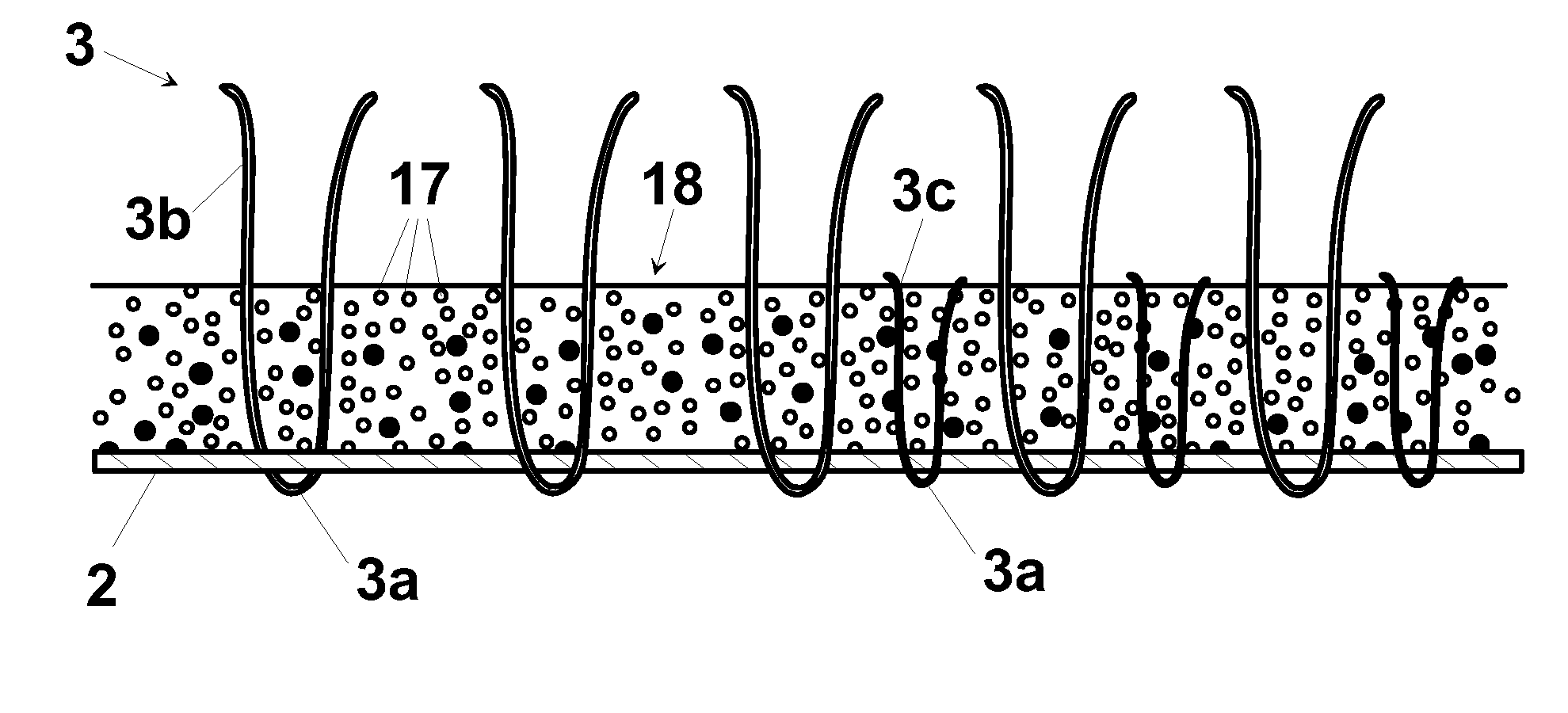Method for producing synthetic turfs
a synthetic turf and synthetic technology, applied in the field of synthetic turf making, can solve the problems of unaesthetic field, high maintenance cost, unsatisfactory synthetic turf quality, etc., and achieve the effect of improving the quality of synthetic tur
- Summary
- Abstract
- Description
- Claims
- Application Information
AI Technical Summary
Benefits of technology
Problems solved by technology
Method used
Image
Examples
Embodiment Construction
[0054]With reference to FIG. 1, a coconut 100 comprises, in summary, a thin, smooth epicarp 101, of grey-brownish colour, a fibrous mesocarp 102, normally 4-8 cm thick, and an wooden endocarp 103. The latter represents the actual fruit of the coconut that is useful for the food field. The epicarp 101 and the fibrous mesocarp 102, hereafter generically indicated as material based on coconut 10, are, instead, sent, sometimes with parts of branches and leaves of coconut trees, to a plant for making infill material for synthetic turfs according to the invention.
[0055]In particular, the method for making a synthetic turf, according to the invention, can provide a starting step operated by the plant shown in FIG. 2. This provides feeding raw material based on coconut, for example collected as bales 10, to means for milling such as a hammer mill 11. The latter mills material 10 obtaining, on the one hand, longer fibres that are gathered and used for example for making ropes and mats, and o...
PUM
| Property | Measurement | Unit |
|---|---|---|
| diameter | aaaaa | aaaaa |
| thick | aaaaa | aaaaa |
| volume | aaaaa | aaaaa |
Abstract
Description
Claims
Application Information
 Login to View More
Login to View More - R&D
- Intellectual Property
- Life Sciences
- Materials
- Tech Scout
- Unparalleled Data Quality
- Higher Quality Content
- 60% Fewer Hallucinations
Browse by: Latest US Patents, China's latest patents, Technical Efficacy Thesaurus, Application Domain, Technology Topic, Popular Technical Reports.
© 2025 PatSnap. All rights reserved.Legal|Privacy policy|Modern Slavery Act Transparency Statement|Sitemap|About US| Contact US: help@patsnap.com



